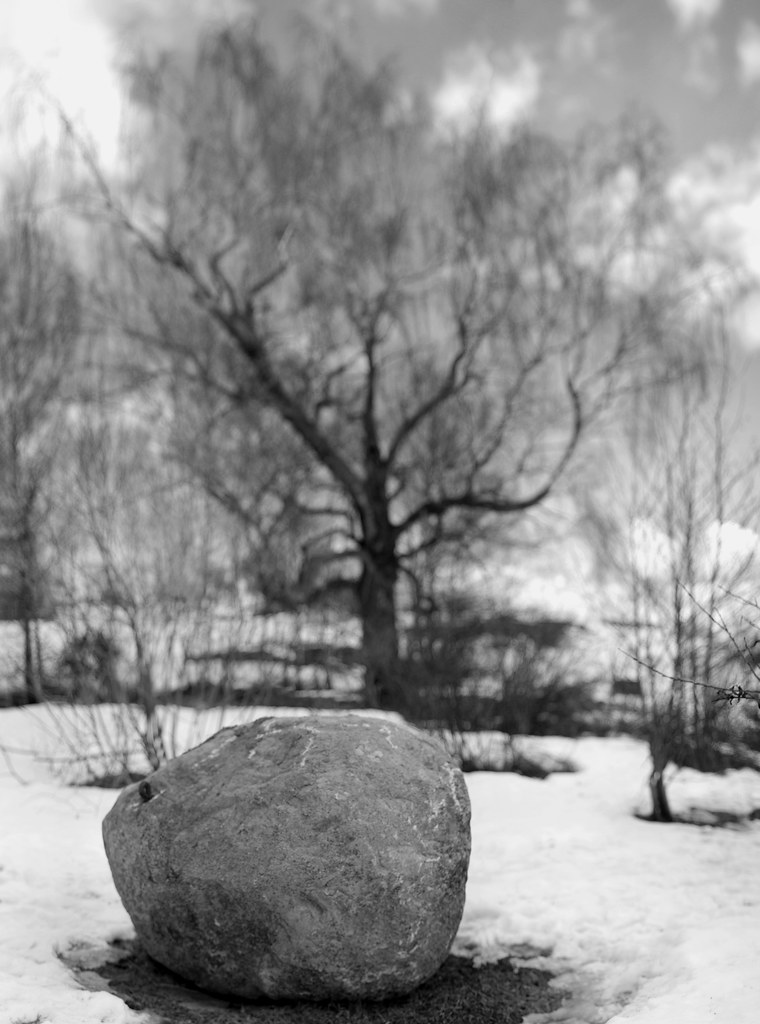 Swedish word of the day. Stenbumling. This big stone was placed here to prevent cars, four-wheelers and anything with an engine from driving down the path leading to the old tree. Shot this using the brenizer technique,around 20 photos stitched together. The tree in the background is not the old tree, but a birch that I have photographed a few times.
Swedish word of the day. Stenbumling. This big stone was placed here to prevent cars, four-wheelers and anything with an engine from driving down the path leading to the old tree. Shot this using the brenizer technique,around 20 photos stitched together. The tree in the background is not the old tree, but a birch that I have photographed a few times.
Friday, March 15, 2013
Stenbumling
 Swedish word of the day. Stenbumling. This big stone was placed here to prevent cars, four-wheelers and anything with an engine from driving down the path leading to the old tree. Shot this using the brenizer technique,around 20 photos stitched together. The tree in the background is not the old tree, but a birch that I have photographed a few times.
Swedish word of the day. Stenbumling. This big stone was placed here to prevent cars, four-wheelers and anything with an engine from driving down the path leading to the old tree. Shot this using the brenizer technique,around 20 photos stitched together. The tree in the background is not the old tree, but a birch that I have photographed a few times.
Subscribe to:
Post Comments (Atom)



11 comments:
In English, I suppose we would call that a barrier or a barricade. Major buildings often have architectural features in front to prevent car bombs from getting too close. There is a name for that feature, but I can't think of it now.
That's a great composition.
I was unfamiliar with the brenizer technique until reading your information. Thank you.
In the USA they have installed barricades of various types around many federal buildings to prevent someone from driving a vehicle into the building or loading a vehicle with explosives and driving next to the building.
A very effective barrier Steffe, and so much more attractive than a bollard!!
Our unruly motorists will find a way to move even that big stone...
I like it. Mass and solidity in a vague space. I'll have to try this one of these days but it sounds like a lot of work.
Stunning photograph.
A town near here has big rocks at the entrances to Walmart's parking lot because they are restricting where tractor trailers can park. Cars can make the turn but not big rigs.
Very interesting picture! The background had me wondering, until I read you had used the brenizer technique.
i looked up stenbumling in German, besides the obvious, Felsbrocken, they have quite a few more, from Radabweiser to Prellstein, Abweichstein, Abweiser, Radstößer and Kratzstein. On the corners of older Viennese streets, to this day some medieval boulders survive, with centuries old horizontal markings from carriage wheels that turned the corner too fast (hence the idiom "die Kurve kratzen" - scratch the curb - if somebody is in a hurry to get away).
What an interesting technique. I'd never heard of it before. The result is certainly stunning. And I always enjoy learning new foreign words, so double bonus!
That's a lovelier solution that a red sign.
Post a Comment